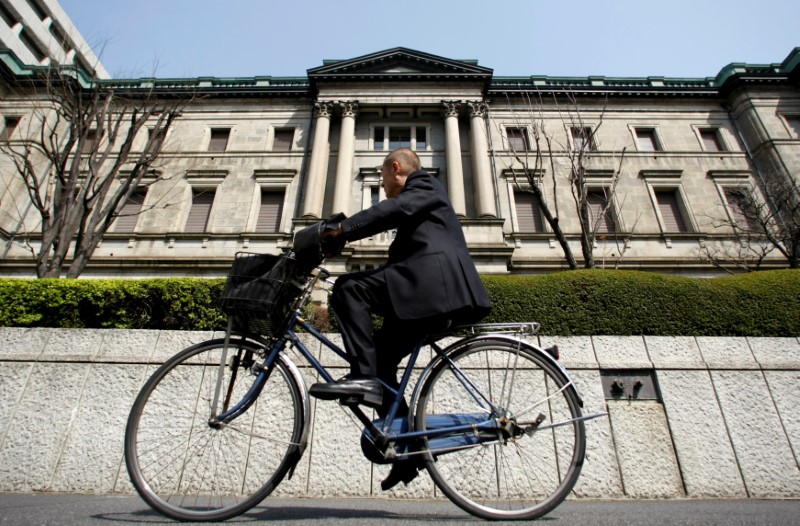By Leika Kihara
TOKYO (Reuters) - The Bank of Japan maintained its optimistic economic view on most of the country's nine regions in a quarterly report out on Monday, signaling its confidence a tightening job market will gradually push up wages and underpin a steady economic recovery.
But some regions warned of weakness in private consumption including the Tokai central Japan region, home to auto giant Toyota Motor Corp (T:7203), where a strong yen hurt corporate profits and dampened consumer sentiment.
BOJ Governor Haruhiko Kuroda maintained his upbeat view of the economy and reiterated the central bank's resolve to maintain ultra-loose monetary policy for as long as needed to hit its ambitious 2 percent inflation target.
"Japan's economy continues to recover moderately as a trend, although some weaknesses are seen in exports and output due to the effect of slowing growth in emerging economies," Kuroda told a quarterly meeting of the BOJ's regional branch managers.
Six of the nine BOJ regional branch managers said their areas' economies continued to recover moderately.
The BOJ revised down its assessment for the Tokai area, the first time it had done so since January 2013, saying its economic expansion was moderating. In its July report, the BOJ said the area's economy was expanding moderately as a trend.
"Exporters make up a big portion of the Tokai region's economy, so the strong yen may have heightened households' uncertainty over the income outlook," a BOJ official told a news conference.
The BOJ revised up its assessment for the two remaining regions, which had seen an increase in industrial output.
Monday's report will be among factors the BOJ's board will scrutinize at its rate review on Oct. 31-Nov. 1, when it will issue fresh quarterly growth and inflation forecasts.
The BOJ is likely to cut next fiscal year's inflation forecast slightly in the new projections, sources familiar with its thinking say, but is seen holding off on expanding stimulus after having revamped its policy framework last month.
The central bank switched its policy target to interest rates from the pace of money printing in September, after years of massive asset purchases failed to jolt the economy out of stagnation and accelerate inflation to its 2 percent target.
